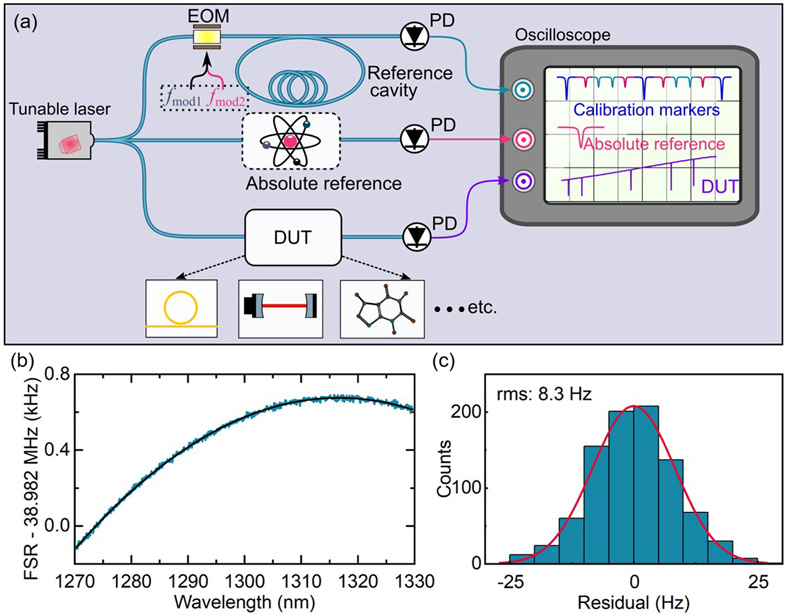| Principle of a Hz-level broadband spectrometer based on dual RF modulation. (a) Measurement scheme. A tunable CW laser is modulated by two RF signals (fmod1, fmod2) via an electro-optic modulator (EOM). The modulated light is used to probe a reference cavity with quasi-periodic structures, such as a fiber cavity or integrated photonic cavity. The transmitted light is monitored by a photodiode (PD) and recorded by an oscilloscope to provide frequency reference markers for the scanning diode laser. The referenced diode laser is used to spectrally measure devices under test (DUT) such as on-chip photonic devices or gas absorption spectra. Optionally, part of the light probes a narrow linewidth atomic/molecular transition for an absolute frequency reference. (b) Measured FSR evolution (blue) of the fiber loop cavity interrogated by the dual RF modulation scheme, together with a second-order polynomial fit (black). (c) Histogram of the frequency difference between the measure FSR and its polynomial fit and a fitted Gaussian curve with a root-mean-square (rms) deviation of 8.3 Hz. Credit: Zhang, Bi, and Del’Haye, doi 10.1117/1.AP.6.4.046003. |
